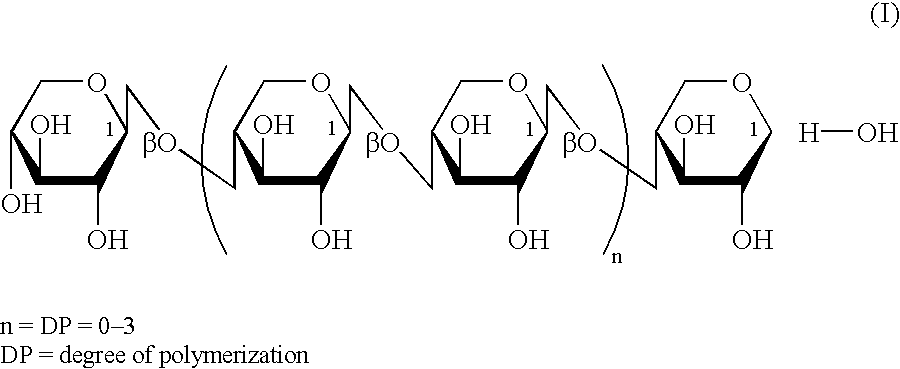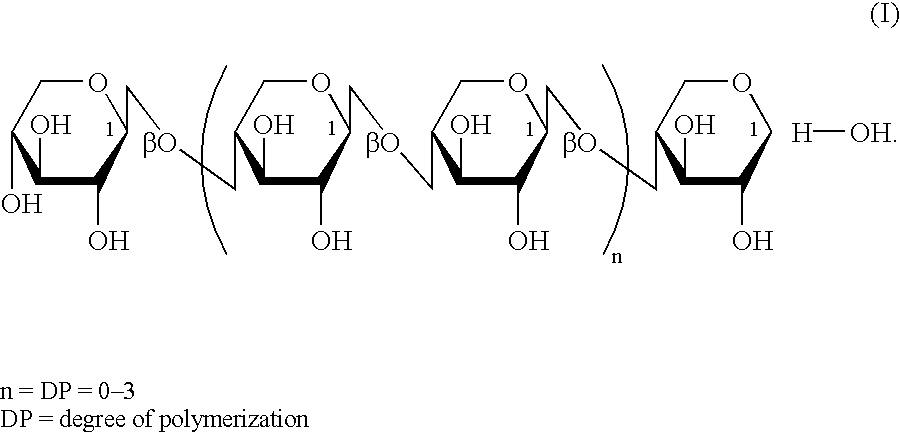Flavor enhancement of beverages
a beverage and flavor technology, applied in the field of beverage flavor enhancement, can solve the problems of inability to meet the taste requirements of beverages, inability to enhance the flavor quality of beverages, and inability to balance sweetness-acidity ratio partially, so as to achieve enhanced flavor quality and full-bodied beverage character.
- Summary
- Abstract
- Description
- Claims
- Application Information
AI Technical Summary
Benefits of technology
Problems solved by technology
Method used
Image
Examples
Embodiment Construction
[0021] Xylooligosaccharides (XOS) were added to a carbonated alcohol-free soft drink containing cola flavoring (Cola base No. 6030 or 340415, from Dohler, Darmstadt, Germany) and subjected to sensory testing. The product called XOS 95 P is a pulverulent oligosaccharide mixture comprising at least 95% by weight of xylooligosaccharide (.sub.nXylo-oligo 95 P", Suntory Limited, Tokyo, Japan). The product XOS 70 S is a xylooligosaccharide syrup of 70% dry matter (.sub.nXylo-oligo 70", Suntory Limited, Tokyo, Japan) comprising at least 70% by weight of XOS. They were used in concentrations of 0.75% by weight (pulverulent product) or 1% by weight (syrup, equivalent to approximately 0.7% dry matter).
[0022] Percentages by weight are based on the entire beverage formula.
[0023] The beverage was sweetened using internationally typical levels of sweeteners, or, in the base of mixtures, internationally typical levels and ratios
[0024] 1. using a combination of the sweeteners acesulfame-K (Sunett, ...
PUM
 Login to View More
Login to View More Abstract
Description
Claims
Application Information
 Login to View More
Login to View More - R&D
- Intellectual Property
- Life Sciences
- Materials
- Tech Scout
- Unparalleled Data Quality
- Higher Quality Content
- 60% Fewer Hallucinations
Browse by: Latest US Patents, China's latest patents, Technical Efficacy Thesaurus, Application Domain, Technology Topic, Popular Technical Reports.
© 2025 PatSnap. All rights reserved.Legal|Privacy policy|Modern Slavery Act Transparency Statement|Sitemap|About US| Contact US: help@patsnap.com


